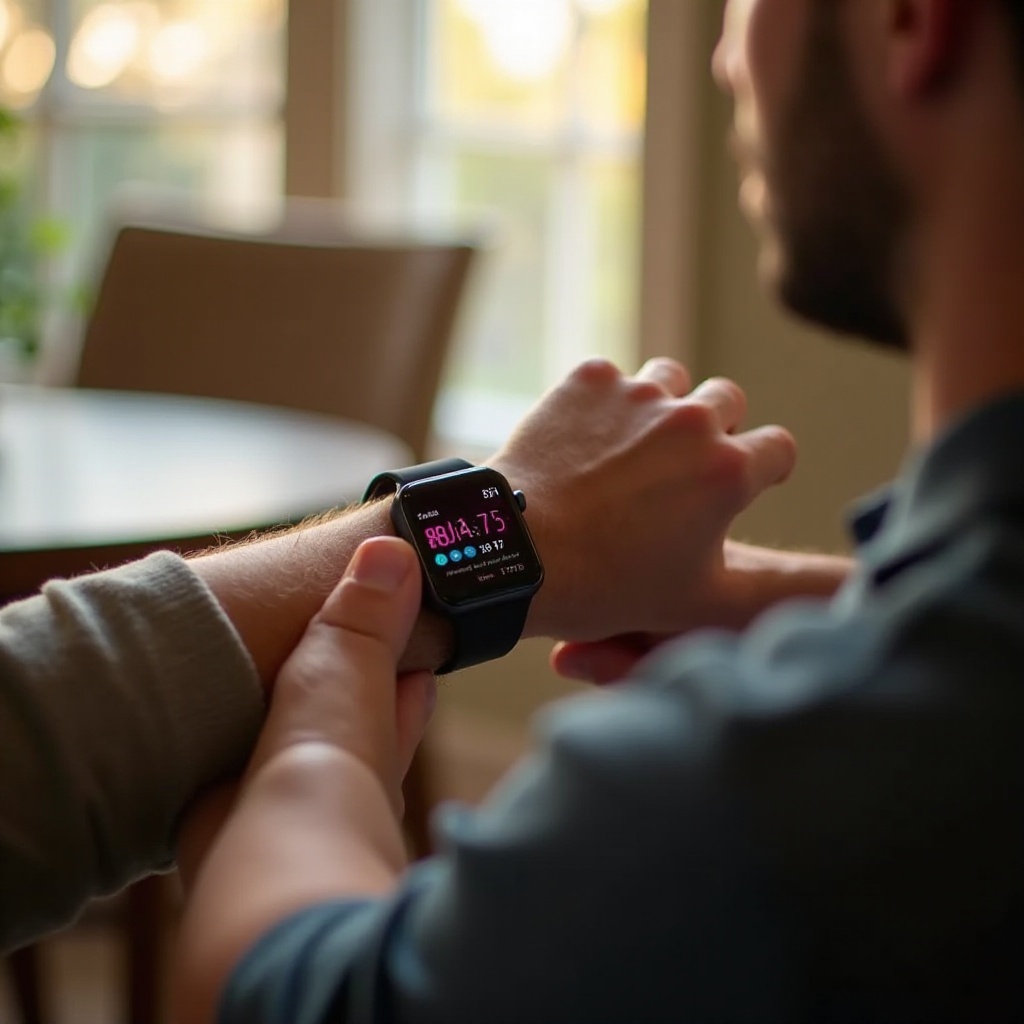Introduction
Smartwatches have evolved from mere time-keeping devices to sophisticated health monitors capable of tracking various physiological metrics. Among these advancements, blood pressure monitoring has emerged as a notable feature. The question naturally arises: how reliable are smartwatches for measuring blood pressure? This blog delves into this question, examining both the technological aspects and real-world reliability of these devices. We will explore their accuracy compared to traditional methods, their advantages, drawbacks, and user experiences to provide a well-rounded view.

How Smartwatch Blood Pressure Monitoring Works
Smartwatches use a technology called photoplethysmography (PPG) to measure blood pressure. PPG involves shining a light, usually green, through the skin, which the sensor in the smartwatch detects. The light reflects off the blood flow, and the sensor captures these changes. This data is then used to estimate blood pressure through algorithms designed to interpret the PPG signals.
These algorithms consider factors such as heart rate, pulse wave velocity, and other physiological inputs to provide a blood pressure reading. Some smartwatches also incorporate electrocardiogram (ECG) technology for more accurate readings. However, it is worth noting that the specific implementation varies from one smartwatch model to another.
While the technology behind smartwatch blood pressure monitoring is impressive, its effectiveness and reliability depend on various factors, including the quality of the sensors, the user’s skin tone, and the watch’s positioning.

Clinical Accuracy: Comparing Smartwatches with Traditional Methods
When comparing smartwatch-based blood pressure monitoring with traditional methods like cuff-based sphygmomanometers, some key differences and similarities emerge. Traditional methods use an inflatable cuff that constricts the arm and measures the pressure required to momentarily cut off blood flow. This method offers high accuracy and is the gold standard in clinical settings.
Smartwatches provide non-invasive, more convenient readings. However, multiple studies have indicated that while smartwatches can be accurate, their measurements can sometimes deviate from those obtained by traditional methods. A study published in the Journal of Medical Internet Research indicated that while smartwatch readings are generally close to traditional methods, they are not yet consistent enough to fully replace cuff-based measurements for clinical use.
Calibrating the smartwatch with traditional methods can improve accuracy. Users are typically required to calibrate the watch periodically to ensure the readings remain aligned with traditional measurements. Despite this, individual variability and technical limitations may still result in less reliable data compared to professional medical devices.
Benefits of Using Smartwatches for Blood Pressure Monitoring
Despite some limitations, smartwatches offer unique benefits for blood pressure monitoring. Here are some notable advantages:
- Convenience: Smartwatches allow for frequent and non-invasive blood pressure readings without the need for cumbersome equipment.
- Accessibility: Users can monitor their blood pressure anytime and anywhere, making it easier to keep track of trends and fluctuations.
- Health Insights: Coupled with other health metrics, smartwatch data can provide comprehensive insights into one’s overall health, improving preventive care.
- Motivation and Engagement: Having a health monitoring device on your wrist encourages proactive health management and consistent monitoring.
- Data Sharing: Users can easily share their data with healthcare providers for better-informed medical consultations.
Common Concerns and Limitations
While the benefits are significant, there are concerns and limitations that should be considered:
- Calibration Needs: Regular calibration with traditional methods is often necessary to maintain accuracy, which can be inconvenient.
- Technology and Sensor Limitations: Varying skin tones, tattoos, and improper watch positioning can affect the accuracy of readings.
- Regulatory Standards: Not all smartwatch models meet the stringent regulatory standards that apply to medical devices.
- Battery Life: Frequent monitoring can drain the battery quickly, reducing the practical utility of the device.
Addressing these concerns involves both user diligence and ongoing technological improvements in smartwatch design and software.

Real User Experiences and Reviews
Feedback from real users provides valuable insights into the practical utility of smartwatches for blood pressure monitoring. Many users appreciate the accessibility and continuous monitoring capabilities, which help them stay informed about their health. However, some users have reported occasional inaccuracies in readings, especially if the device is not properly calibrated or positioned.
For example, a user named Emily noticed that her smartwatch readings closely matched those of her cuff-based monitor after initial calibration, but discrepancies arose when she skipped regular calibration checks. Another user, John, appreciated how the smartwatch data helped him identify trends and discuss them with his doctor, although he still relied on traditional methods for final confirmation.
These mixed experiences highlight the importance of proper usage and the complementary role of traditional methods.
Future of Blood Pressure Monitoring in Smartwatches
The future of blood pressure monitoring in smartwatches looks promising. With advances in sensor technology, improved algorithms, and machine learning, the accuracy and reliability of these devices are expected to enhance significantly. The integration of more sophisticated biometric sensors and health-monitoring features will likely elevate their usefulness.
Researchers and manufacturers are continually exploring innovations like cuff-less blood pressure measurement and improved calibration methods to make smartwatches more accurate and reliable. Cooperation with regulatory bodies will also play a critical role in ensuring these advancements meet medical standards.
Conclusion
Smartwatches have made significant strides in the realm of health monitoring, offering a convenient way to keep an eye on blood pressure. While they are not yet a full substitute for traditional methods, their benefits and continual advancements make them valuable tools for personal health management. Understanding their limitations and calibrating them correctly can help users gain the most accurate readings, allowing for better-informed health decisions.
Frequently Asked Questions
How do smartwatches measure blood pressure?
Smartwatches use photoplethysmography (PPG) technology to measure blood pressure, detecting light changes reflected off blood flow and interpreting this data through algorithms.
Are smartwatch blood pressure readings accurate enough for medical use?
While generally accurate, smartwatch readings can sometimes deviate from traditional methods. Regular calibration with a cuff-based monitor enhances accuracy.
How can I ensure accurate blood pressure readings from my smartwatch?
Ensure proper watch positioning, calibrate regularly with a traditional monitor, and follow manufacturer guidelines for the best results.
